Figures & data
Table 1. Eddy covariance tower sites from the FLUXNET 2015 Tier one dataset used in this study. 39 tower sites were selected where the incoming and diffuse incoming photosynthetic photon flux density data exist.
Figure 1. Flow diagram for key variables in this study. Different time scales are distinguished with box colors indicated at the bottom left. The box with dotted lines indicates the corrected temporal upscaling scheme.
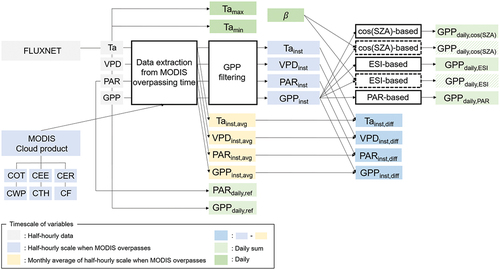
Figure 2. Histograms of the local overpass time for the terra-MODIS and aqua-MODIS. Histogram colors denote the cloudiness of the sky (i.e. clear, cloudy, and ambiguous) at its local overpass time. The cloudiness of the sky was distinguished based on the MODIS cloud mask product (i.e. MOD06 and MYD06).
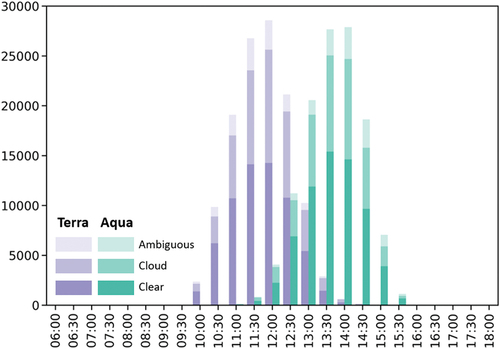
Figure 3. Site-level seasonal correlations between GPPinst,diff with three environmental variables (PARinst,diff—yellow, Tainst,diff—red, VPDinst,diff—blue). The correlation was calculated when the number of samples is larger than 10.
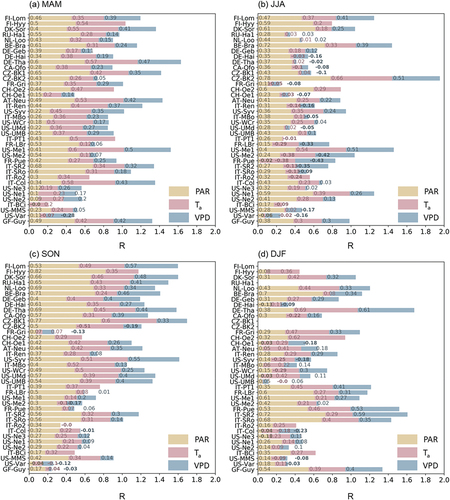
Figure 4. Site-level seasonal correlations between GPPinst,diff with three environmental variables (PARinst,diff—yellow, Tainst,diff—red, VPDinst,diff—blue) under clear and cloudy conditions. The correlation was calculated when the number of samples is larger than 10.
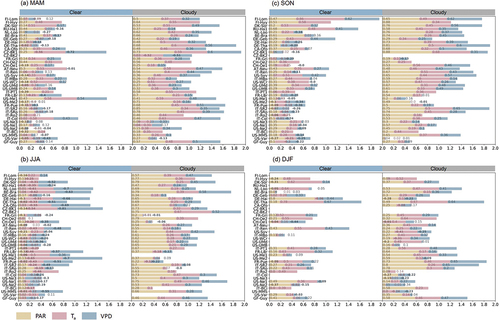
Figure 5. The station-based comparison of slope (refer to Section 3.2) between GPPdaily,ref and the upscaled GPP (i.e. blue: GPPdaily,cos(SZA), purple: GPPdaily,ESI, yellow: GPPdaily,PAR) are presented according to vegetation types: (a) Deciduous broadleaf forests (DBF), (b) Evergreen broadleaf forests (EBF), (c) Evergreen needleleaf forests (ENF), (d) Mixed forests (MF), (e) Grasslands (GRA), and (f) Croplands (CRO). The comparison performed when the number of samples are larger than 10. The x-axis represents the local overpassing time of MODIS divided into one-hour intervals. The y-axis denotes the slope. The red dotted line shows where the slope is 1.
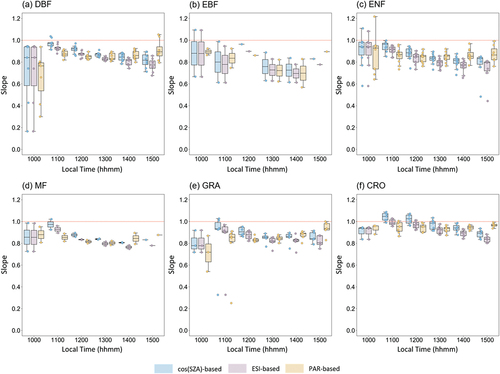
Figure 6. The station-based comparison of R2 (referred to section 3.2) between GPPdaily,ref and the upscaled GPP (i.e. blue: GPPdaily,cos(SZA), purple: GPPdaily,ESI, yellow: GPPdaily,PAR) are presented according to vegetation types: (a) deciduous broadleaf forests (DBF), (b) evergreen broadleaf forests (EBF), (c) evergreen needleleaf forests (ENF), (d) mixed forests (MF), (e) grasslands (GRA), and (f) croplands (CRO). The comparison performed when the number of samples are larger than 10. The x-axis represents the local overpassing time of MODIS divided into one-hour intervals. The y-axis denotes the R2. The red dotted line shows where the R2 is 1.
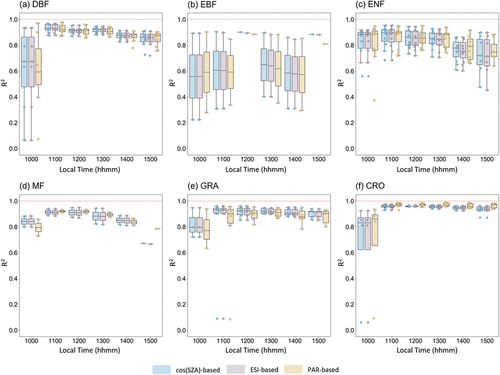
Figure 7. The comparison between the clearness index and the difference between GPPdaily,ref and the three temporal upscaling approaches: (a) cos(SZA)-based, (b) ESI-based, (c) PAR-based. The red represents high point density while the blue indicates low point density.

Figure 8. The relationships between GPPinst,diff and PARinst,diff under (a) clear and (b) cloudy sky conditions. Colors indicate the diffuse ratio calculated from the eddy flux data.
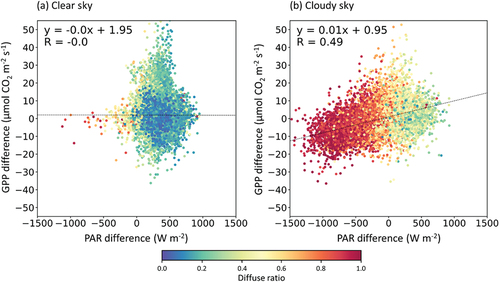
Figure 9. Density plots between the upscaled daily GPP and reference data: (a) GPPcos (SZA),daily, (b) corrected GPPcos (SZA),daily, (c) GPPESI,daily, and (d) corrected GPPESI,daily.
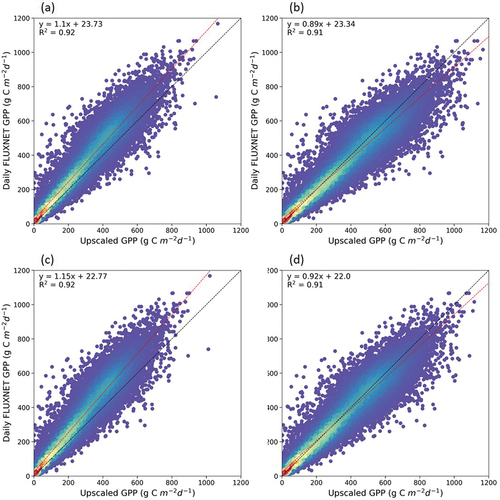
GPP_revision_supplementary_final.docx
Download MS Word (2.8 MB)Data availability statement
The FLUXNET2015 dataset is available at https://fluxnet.org/data/fluxnet2015-dataset/. The MODIS cloud products (i.e. MOD06_L2 and MYD06_L2) used in this study can be accessed through the NASA LAADS DAAC (https://ladsweb.modaps.eosdis.nasa.gov/search/).
